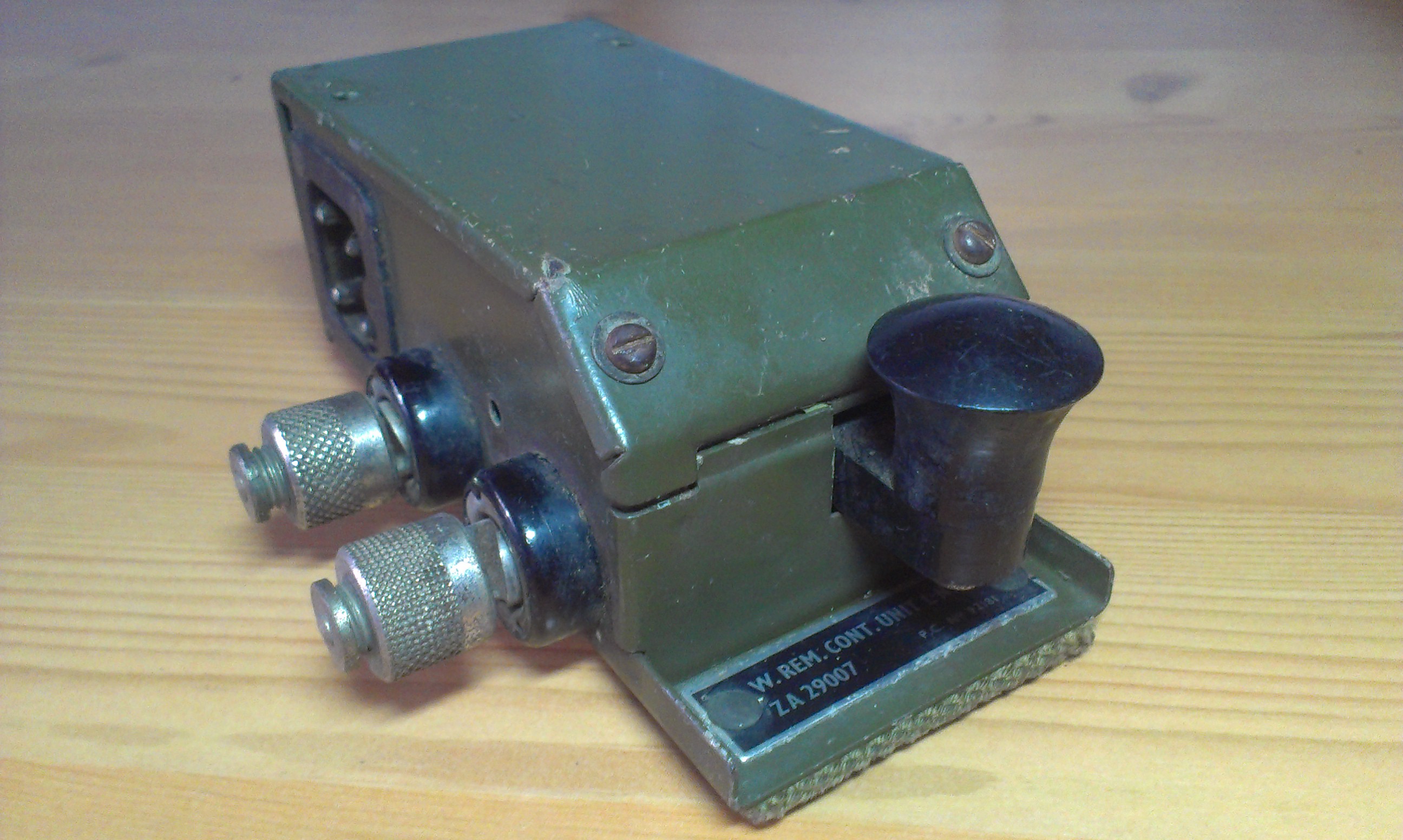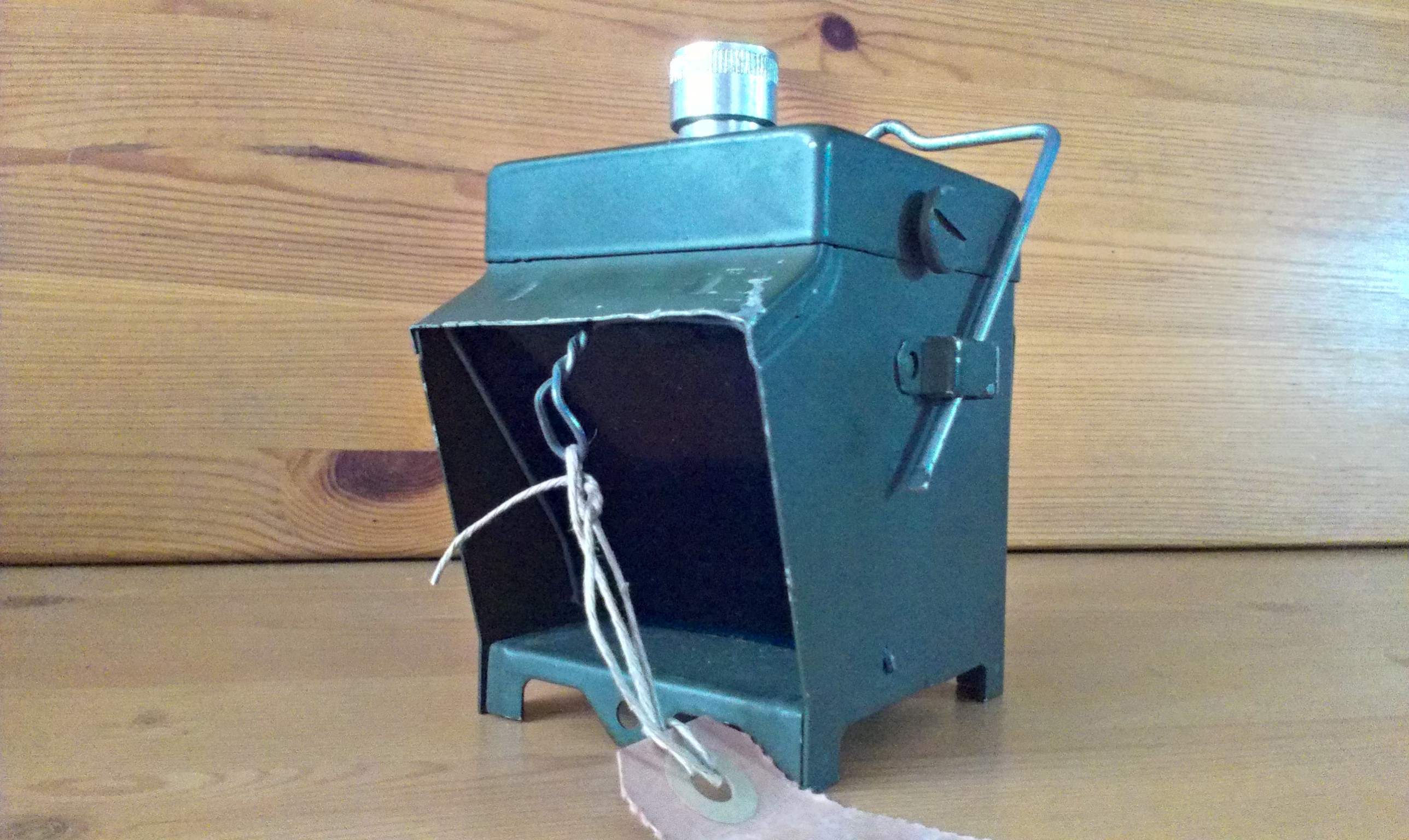|
Key-and-sounder combination set known as KOB from Menominee Electric Co. (which later became Signal Electric Co.) manufactured in Menominee Michigan fitted with a the company's version of the Triumph Key . |
|
|
American Military key model J-48 A was mounted on the flip-open front panel of the BC-654 portable and mobile radio sets. WWII |
|
|
Soviet Army key which were used in Sea Fleet. Tiny metal lever mounted on a backelite brown base. Mechanism covered by chrome metal cover. All mounted on a grey stamped aluminium base. |
|
|
Mc Murdo This small key was used on many post-WW-II British and Australian portable field radio sets. It is completely sealed and waterproof and has non adjustable contacts which require about 283g pressure and have 3mm travel. |
|
|
The Instructograph Juior was produced from the 1920s ! Instructographs were used by many thousands of would-be telegraph operators to learn and increase their code-copying ability. The original version shown uses a hand-wound spring driven motor with a centrifugal governor and were supplied with American Morse Code paper tapes with short holes for dots and long holes for dashes. Later models used electric motor drives and included a battery powered and later AC line powered oscillator to produce tones for training radio operators. The manual says "if one cannot learn to become a skilled operator with the consistent use of the machine and instruction, they had as well give up the idea" (circa 1947) |
|
|
NATO Key has preset tension settings. It was designed for use by NATO forces. Made by Pryce Edwards Ltd. and Marconi S. & R. Systems Ltd in the 1970/80's. The cover of this key is battleship grey painted brass. It weighs a hefty 3-1/2 lbs. The cover measures 8" by 3.25" (203mm by 83mm) but the keys overall length is 10.5" (268mm). |
|
|
British Army Morse Key Trainer |
|
|
Clansman Morse Key is a vehicle and fix station robust key. It is used with the VRC-321, VRC-353, can also be used with Clansman back-pack radios such as PRC-319, PRC-320 when used in a stationary role. The cable terminates with a 7 pin standard Clansman audio plug. Clansman has been in use by British forces since the early 1980s in most recent UK military operations , the first active use being by 2nd Bn the Parachute Regiment in the Falkland Islands operation in 1982 . Made by R.O.F. Blackburn Royal Ordnance Factories ( ROFs ) was the collective name of the UK government's munitions factories in and after World War II . Until privatisation in 1987 they were the responsibility of the Ministry of Supply and later the Ministry of Defence . |
|
|
Clansman Morse Key is a vehicle and fix station robust key. It is used with the VRC-321, VRC-353, can also be used with Clansman back-pack radios such as PRC-319, PRC-320 when used in a stationary role. The cable terminates with a 7 pin standard Clansman audio plug. Clansman has been in use by British forces since the early 1980s in most recent UK military operations , the first active use being by 2nd Bn the Parachute Regiment in the Falkland Islands operation in 1982 . |
|
Luftwaffe Flameproof Key which was copied by the allied Forces and became the CTE-26003A WW II U.S. Navy key. The first three letters indicate the manufacturer: Telephonics Corp. |
|
|
|
|
| Larkspur Unit Operarator No. 1 No.2 MkIII military morse key was widely used in World War II. It has connectors for mic and phones. It houses a WT 8 AMP No.2 MkIII Key. |
|
|
|
|
| K-64 by VEB Funkwerk Leipzig made in East Germany. NVA stands for Nationale Volksarmy. Key is marked as NVA 101. |
|
By Otfried DL9YG + 9H3JW |
|
|
MFJ-564 Deluxe Iambic Paddle. |
|
|
British Commercial Marine Spark Training Key. The large brass plates were used as a resonator to make a good noise on the desk or table so that the teacher could listen if the dits and dots were properly sent bythe students. |
|
( circa 1935 ) |
|
|
Homebrew Key copy of the J-46 Signaling key. |
|
|
Homebrew Hacksaw Blade Sideswiper Key Key by OH2HOD Raili, OH2OT Keijo & OH2ME Esco donated to me as a gift. This type of keys are also known as Double Speed Key and Cootie Key. |
|
|
Hungerian Military Key still in original packing ( un-issued ) made in Budapest by Mechlabor produced for the Warsaw Pact 1945 - 1985 and were used with the R104M radio sets. |
|
|
British WW II
YA1860
This key is part of a Field-telephone Sets. Measures 6 X 4 X 4 cm. |
|
|
Landline camelback design for added balance with the flat, non- adjustable spring. This Key was manufactured in circa 1870-1880 by the Austrian Company Hekaphon. (Marked no.25) |
|
|
This Junkers key came from a German research ship. Inside the cover is a stamp BMI = Bundesministerium des Innern (in English Interior Federal Ministry). |
|
|
Redifon A4284 Marine type. This key features neither a pivoting shaft nor coiled springs. ( Redifon - formed in 1948 was part of the large REDIFUSION company). |
|
 |
|
|
Remote control unit L-Nº 2 was manufactured by PYE U.K. and were used with Wireless Sets number 62 and C12 from the 1940's through the 1960's by Commonwealth Countries Military, including South Africa, from 1940-1960.
|
|
 |
|
|
WWII bicycle/ motorcycle lantern with swappable yelloy/green lense colours. The bulb inside supplied by a battery in the housing. Morse signals are sent by depressing the top knob.
|
|
